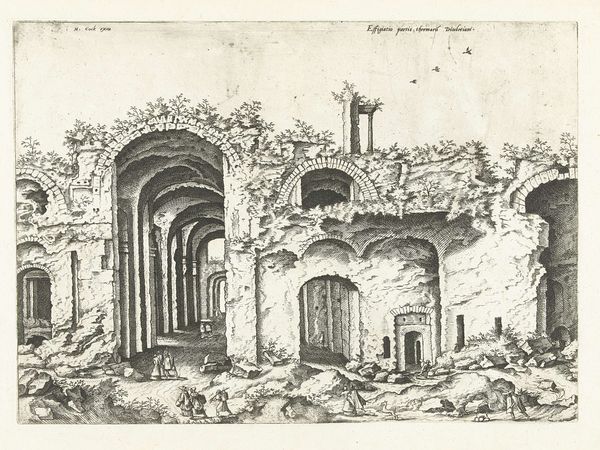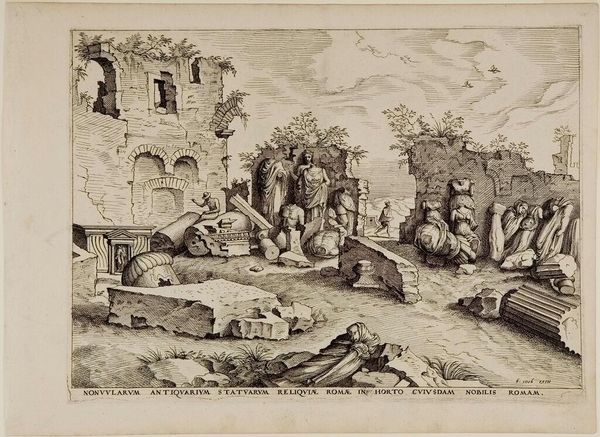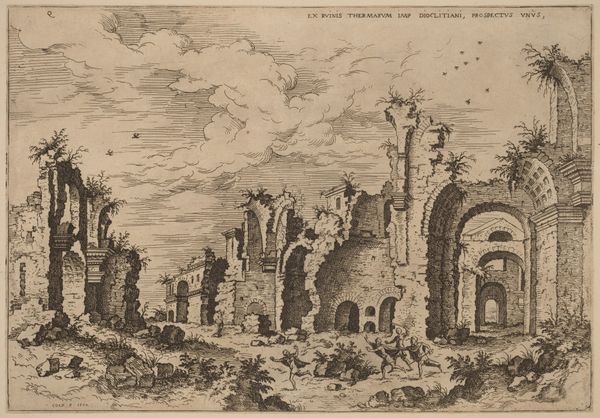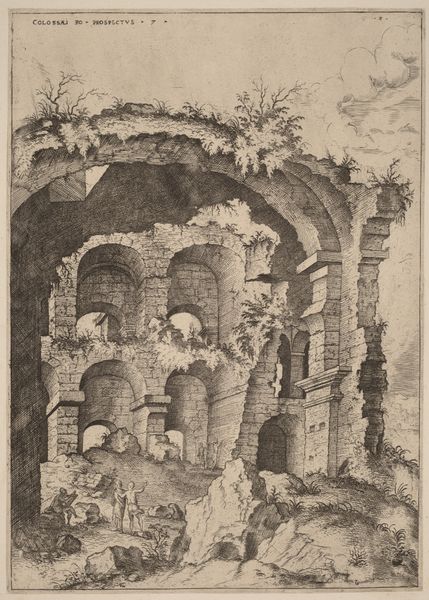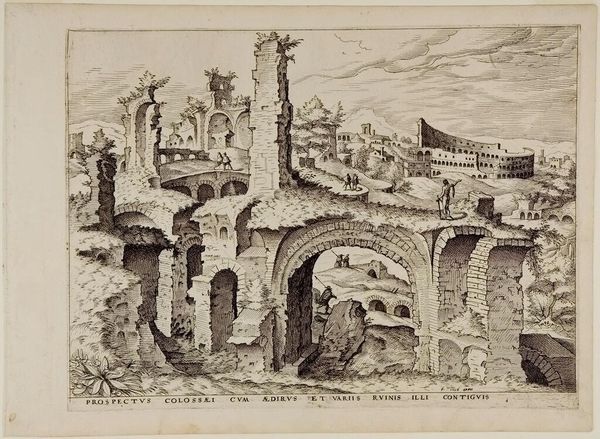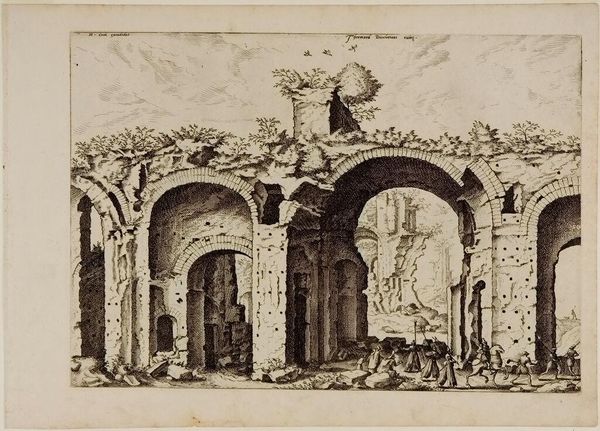
Vierde gezicht op ruïnes op de Palatijn c. 1561 - 1600
0:00
0:00
johannesoflucasvandoetechum
Rijksmuseum
drawing, etching, ink
#
drawing
#
pen drawing
#
etching
#
landscape
#
mannerism
#
form
#
ink
#
geometric
#
ancient-mediterranean
#
line
#
history-painting
Dimensions: height 230 mm, width 324 mm
Copyright: Rijks Museum: Open Domain
Curator: Looking at this drawing, I'm immediately struck by its somber, almost haunting mood. The stark lines and decaying structures create a real sense of desolation. Editor: That's precisely the effect intended. This is "Fourth View of Ruins on the Palatine Hill," an etching and pen drawing in ink by Johannes or Lucas van Doetechum, dating from around 1561 to 1600. It depicts a landscape that isn't just scenery; it’s a political statement about power and history. Curator: Political statement? I'd assumed the artist was simply documenting what they saw. The level of detail in the ruins suggests an interest in architectural accuracy. Editor: Accuracy, yes, but within a framework of interpretation. The Palatine Hill, as the legendary founding place of Rome and later the site of imperial palaces, carries enormous weight. These aren't neutral ruins. The artist uses them to symbolize the transience of empire and the inevitable decline of earthly power structures. Curator: So the overgrown vegetation and the figures wandering amidst the debris underscore this theme of decay? It seems a pointed commentary on the hubris of empire. Is there also a feminist reading of this image to consider? Editor: Absolutely. You could view the crumbled structures as representing patriarchal systems that have crumbled and dissolved over time. Who benefits and who is disadvantaged by a destroyed structure? What rose from this destroyed patriarchy? How did it get supplanted, both in reality and within the historical fiction of the drawing itself? How are they replaced, reshaped? We need to interrogate those stories. Curator: It's a fascinating lens through which to view it. Beyond that theoretical dimension, do we know anything about the audience for such images? Were these intended for collectors, or perhaps for architects studying classical forms? Editor: Certainly collectors with an antiquarian interest. But more broadly, prints like these circulated widely, shaping perceptions of Rome and its history. The Doetechums, as printmakers, were influential in constructing a visual narrative of Roman history for a wider European audience, carrying certain social implications that would reinforce some groups and further silence others. Curator: It does seem we should never take the depiction of any site or ruin at face value. Editor: Precisely. It challenges us to interrogate narratives of power and legacy that have privileged certain voices at the expense of others. And of course, a historical record always carries implicit judgements based on how much access certain people have to create such record in the first place. Curator: Thanks, these are compelling insights that push me to rethink the social dimensions of viewing landscapes as cultural products.
Comments
No comments
Be the first to comment and join the conversation on the ultimate creative platform.


